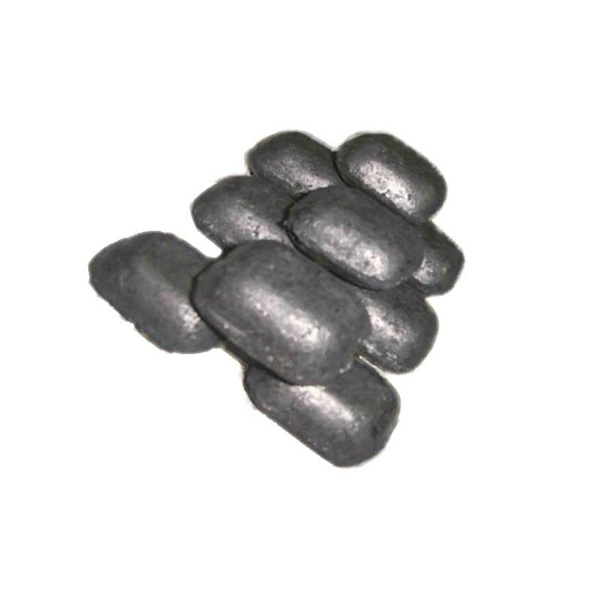Excellent quality Pet Coke - Metallurgical coke – Yunai
Excellent quality Pet Coke - Metallurgical coke – Yunai Detail:
coke
Coke obtained from high temperature coking is used for blast furnace smelting, casting and gasification. The recovered and purified coke oven gas produced in the coking process is not only a fuel with high calorific value, but also an important industrial raw material for organic synthesis.
Metallurgical coke is a general term for blast furnace coke, foundry coke, ferroalloy coke and nonferrous metal smelting coke. Since more than 90% of metallurgical coke is used in blast furnace ironmaking, blast furnace coke is often called metallurgical coke.
Foundry coke is coke specially used for melting iron in iron furnaces. Foundry coke is the main fuel for melting iron in iron furnaces. Its function is to melt the charge and superheat the molten iron, and support the material column to maintain its good air permeability. Therefore, foundry coke should have the characteristics of large lumps, low reactivity, small porosity, sufficient impact resistance to crushing strength, low ash and sulfur content, etc.
Application:
Coke is mainly used in blast furnace ironmaking and blast furnace smelting of non-ferrous metals such as copper, lead, zinc, titanium, antimony, mercury, etc., and acts as a reducing agent, heating agent and material column skeleton. The use of coke instead of charcoal in the iron-making blast furnace laid the foundation for the large-scale modern blast furnace, which is a major milestone in the history of metallurgy. In order to achieve better technical and economic indicators for blast furnace operation, coke for smelting (metallurgical coke) must have appropriate chemical and physical properties, including thermal properties during the smelting process. In addition to being widely used in iron making and non-ferrous metal smelting (metallurgical coke), coke is also used in foundry, chemical industry, calcium carbide and ferroalloys, and its quality requirements are different. For example, coke for casting generally requires large particle size, low porosity, high fixed carbon and low sulfur content; coke for chemical gasification does not have strict requirements on strength, but requires good reactivity and high ash melting point; coke for calcium carbide production requires Maximize the fixed carbon content
Quality Index
Coke is a solid product of high-temperature dry distillation, the main component is carbon, and it is a cracked and irregular porospore structure (or porospore porous body). The number of cracks directly affects the strength and crushing strength of coke, and its index is generally measured by crack degree (referring to the length of cracks in coke per unit volume). The index to measure the porosity structure is mainly expressed by porosity (the percentage of coke pore volume in the total volume), which affects the reactivity and strength of coke. Different uses of coke have different requirements for porosity index. Generally, the porosity of metallurgical coke is required to be 40-45%, that of casting coke is required to be 35-40%, and that of coke for export is required to be around 30%. The level of coke cracking and porosity is directly related to the type of coal used in coking. For example, coke made mainly of gas coal has many cracks, high porosity and low strength; coke made of coking coal as the base coal has cracks. Less, low porosity, high strength. Coke strength is usually expressed by two indicators: crushing strength and abrasion resistance.The crushing strength of coke refers to the ability of coke to resist external impact without being broken along the cracks or defects of the structure, expressed by M40 value; the wear resistance of coke refers to the ability of coke to resist external friction without producing surface friction. The ability of glass to form chips or powder, expressed by M10 value. The crack degree of coke affects its crushing strength M40 value, and the porosity structure of coke affects the wear resistance M10 value. There are many methods for measuring the values of M40 and M10, and the German Migong drum test method is mostly used in my country.
Product detail pictures:


Related Product Guide:
Sticking to the belief of Creating products of high quality and making friends with people from all over the world, we always put the interest of customers in the first place for Excellent quality Pet Coke - Metallurgical coke – Yunai , The product will supply to all over the world, such as: Sydney, Gambia, New Orleans, With well educated, innovative and energetic staff, we are responsible for all elements of research, design, manufacture, sale and distribution. By studying and developing new techniques, we are not only following but also leading fashion industry. We listen attentively to the feedback from our customers and provide instant replies. You will instantly feel our professional and attentive service.
Timely delivery, strict implementation of the contract provisions of the goods, encountered special circumstances, but also actively cooperate, a trustworthy company!




 Quote Now
Quote Now


